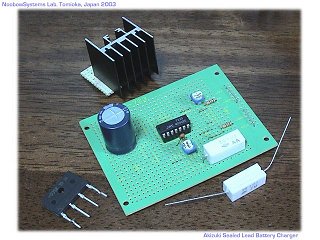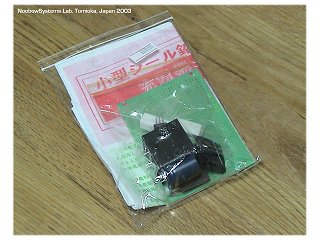

|
Sealed Lead Battery Charger Kit <Japanese Page> Simple but deep world Charging a battery seems to be a simple act, but development for a best charging method still continues even after more than 100 years. It is indeed a deep world. |
 |

|
Akizuki Electonics is so popupar among Japanese electronics hobbyst, with their hundreds of kits for intermediate to advanced kit builders. They have a kit of Sealed Lead Battery Charger, priced 1000 Yen. I could finally have a time to visit Akihabara and purchased one. |
The circuit board uses the universal prototyping board, but the dedicated pattern with resist is formed. Silk printing is provided. Seemingly this board is common with other models; there are several parts which are not used in this model. Jumper wires are necessary for them. This is quite amateur way, positively speaking. Akizuki products always give possibility and expandability for creative builders. Heat sink for a power transistor comes with the kit, bit it is not mounted on the board. How to mount it is completely up to the builders.